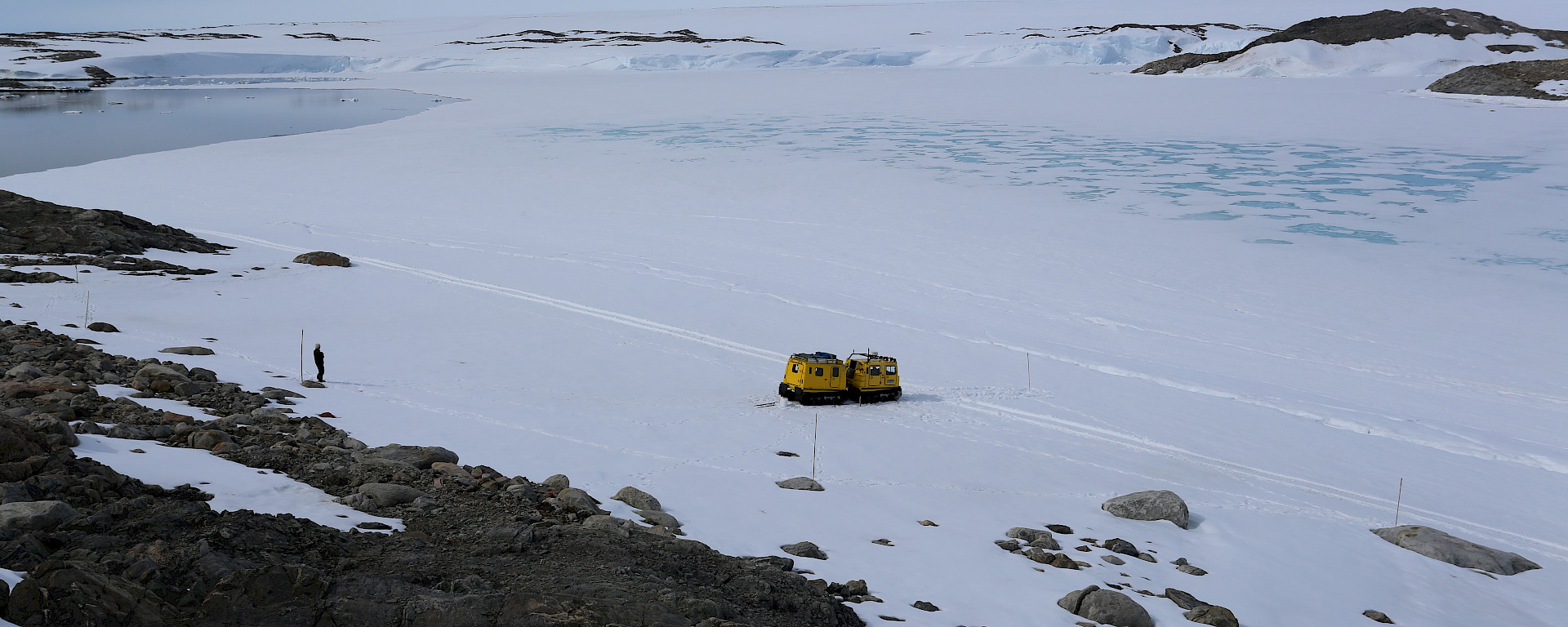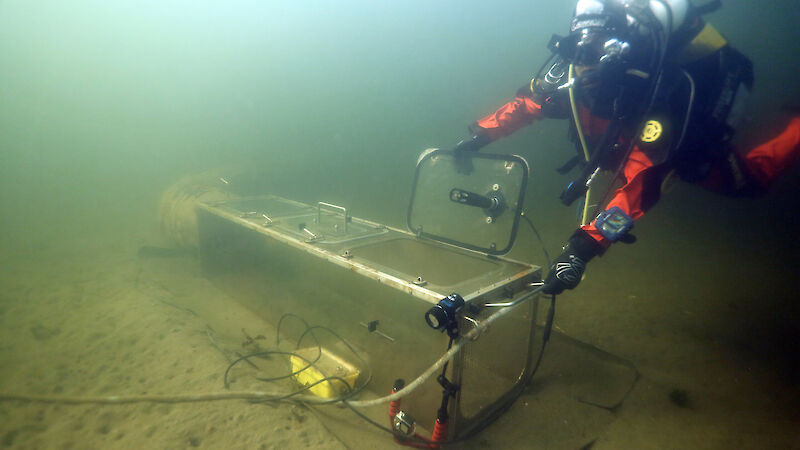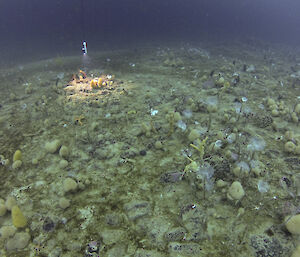Get the latest news on the progress of this project with the team’s blog from the field.
Building a future ocean in Antarctica
Australian scientists will create a ‘future ocean’ under the sea ice off Casey this summer (2014–15), using four underwater chambers to measure the impact of ocean acidification on seafloor (‘benthic’) communities.
Ocean acidification is caused by increasing amounts of atmospheric carbon dioxide (CO2) dissolving into seawater. This causes the pH of the seawater to drop (see ‘Fast Facts’ below) and become more acidic, which affects the ability of some marine organisms, including corals and bivalves, to form shells and other hard structures.
The four semi-enclosed chambers will be deployed 10 to 20 m beneath the Antarctic sea ice off Casey station between November 2014 and March 2015.
During the Antarctic ‘Free Ocean Carbon Enrichment’ (antFOCE) experiment, a team of scientific divers, technicians and engineers, will increase CO2 concentrations in the water within two of the chambers. This will decrease the pH of the water by 0.4 pH units, without changing light or nutrient concentrations. A further two chambers will be used as ‘controls’ to track natural fluctuations in pH in the surrounding water. This will allow the team to compare the response of benthic communities exposed to current seawater pH levels, and the more acidic pH levels predicted under future CO2 emission scenarios.
A variety of observations and measurements will be taken to allow the team to determine how benthic marine habitats respond to decreased seawater pH. These include:
- changes in benthic invertebrate community biodiversity and composition in sediments and on hard substrata
- seawater carbonate chemistry
- nutrient cycling in sediment
- changes in communities of bacteria, diatoms (single celled marine plants) and sediment ‘meiofauna’ (very tiny critters)
- ‘bioturbation’ — how the actions of animals mixes the sediment
- ‘primary production’ — the growth of marine plants such as diatoms.
The research will assist governments, scientists, modellers and society to understand the emerging impacts of ocean acidification on marine ecosystems and to ensure that the most relevant information underpins decisions to manage the threat.
Fast facts: ocean acidification
- When CO2 dissolves from the atmosphere into the ocean it increases the acidity of the ocean.
- The Southern Ocean absorbs 40% of the global ocean uptake of CO2.
- Cold water is able to absorb more CO2 than warmer water. As a result, polar waters are acidifying at twice the rate of tropical waters.
- Changes in acidity is measured on a pH scale. Generally, pH 7 is neutral, while a range between 0 and 7 is considered acidic and between 7 and 14 is alkaline. While the ocean pH is currently above pH 8, it is gradually decreasing, thereby become more acidic.
- Ocean acidification disrupts the formation of calcium carbonate (CaCO3), which is a major structural component of shells and similar hard structures made by some marine organisms, including phytoplankton and coral.
- Ocean acidification also affects the metabolic and physiological processes inside organisms including development, growth, reproduction and respiration.
- Ocean acidification will result in both winners and losers in future oceans. Some marine algae are expected to benefit from ocean acidification but most calcifying organisms are expected to suffer.
- The Intergovernmental Panel on Climate Change (IPCC) found that since pre-industrial times there has been an average decrease in ocean pH of 0.1 unit.
- Under a ‘business as usual’ CO2 emissions scenario, ocean pH is projected to decrease by another 0.3 to 0.4 units by 2100.
- Current atmospheric CO2 concentrations are about 416 parts per million (ppm), while ocean pH is about 8.1. By 2100 under ‘business as usual’ emissions, atmospheric CO2 is predicted to be about 936 ppm and ocean pH 7.8.
- The Antarctic research team will run their CO2-enriched chambers at 0.4 pH units below the current naturally fluctuating pH of the waters off Casey station.




